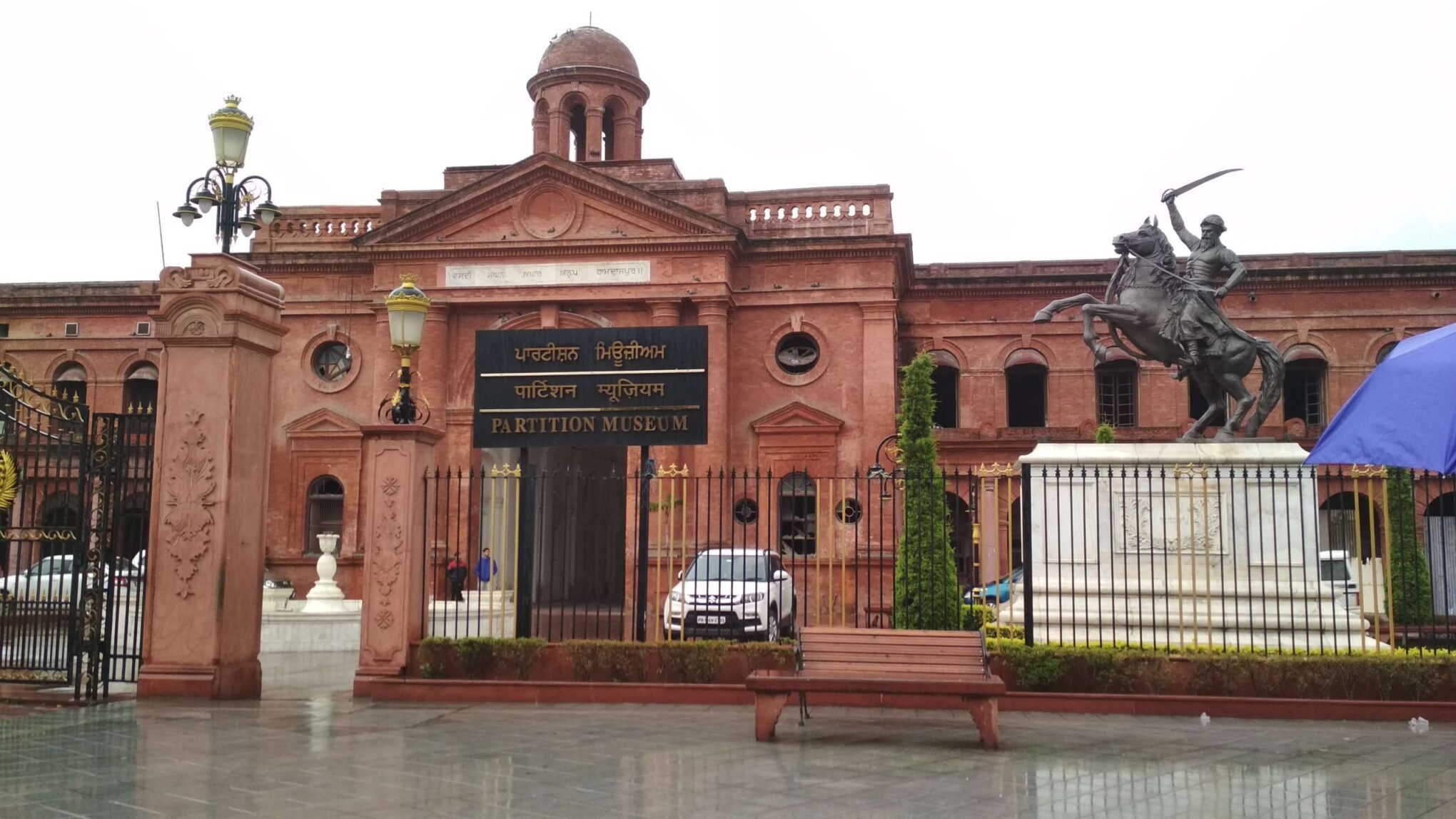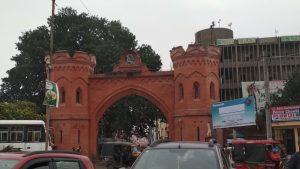Reading Time: 5 minutes
Nabanita recounts her visit to the Partition Museum, at Amritsar, as if the two cities of Kolkata and Amritsar are soul sisters, separated in space but bonded by a tragedy yet to be forgotten. An exclusive for Different Truths.
 My last stay away from home in a pre-lockdown world was Amritsar. Today, as we follow social distancing globally, not even knowing if and when we shall go back to the world we know, snippets of memories keep coming back. I had returned from the city after a fortnight of stay there, just as the virus was beginning to reveal its greedy claws to us Indians, after having devastated almost the whole of Europe. Though there were a lot of tensions regarding my return flight that would make for another story, the journey ended quite uneventfully. But what it left behind was a bag full of stories – not the general travel stories of go-to places or things to do types, but stories of a place that has a soul, stories that must be told but slowly, separately.
My last stay away from home in a pre-lockdown world was Amritsar. Today, as we follow social distancing globally, not even knowing if and when we shall go back to the world we know, snippets of memories keep coming back. I had returned from the city after a fortnight of stay there, just as the virus was beginning to reveal its greedy claws to us Indians, after having devastated almost the whole of Europe. Though there were a lot of tensions regarding my return flight that would make for another story, the journey ended quite uneventfully. But what it left behind was a bag full of stories – not the general travel stories of go-to places or things to do types, but stories of a place that has a soul, stories that must be told but slowly, separately.
Amritsar still holds memories of partition, one only has to look for it in the right places. In my almost fifteen days stay there, I found many such stories lying around waiting for an interested listener.
Being from Bengal, Amritsar had instantly bonded with me over one of the most tragic phases of Indian history – the Partition. It is as if the two cities of Kolkata and Amritsar are soul sisters, separated in space but bonded by a tragedy yet to be forgotten. Amritsar still holds memories of partition, one only has to look for it in the right places. In my almost fifteen days stay there, I found many such stories lying around waiting for an interested listener.
Housed within the Town Hall in one of the busiest parts of the city, Partition Museum was the first storyteller I found there. It speaks of the scars of partition that still remains unhealed under the skin of the throbbing city. Through articles, artefacts, oral histories, audiovisual clippings, newspaper cuttings and much more, the museum tries to stitch people’s perspectives of the partition. While it has voices of Mahatma Gandhi, Radcliff and Kuldeep Nayyar, it also preserves narrations by eyewitnesses, who were simple village folks, survivors of riots.
…the Partition Museum creates multiple histories – the political, the social, the marginal, the religious, the cultural and so on. It also brings Bengal and Punjab on the same platform by including histories of both the states. There are voice narrations by Gopal Pantha, Jugal Chandra Ghosh regarding their roles during Bengal riots, Tagore’s song in protest against partition, and many other tidbits of history from Bengal
It speaks of the agony of a Punjabi youth, who saw his own father beheading a number of young girls to save their honour and the way the girls themselves came to offer their lives, which they considered way better than the dishonour that the rioteers would bring. In this way, the Partition Museum creates multiple histories – the political, the social, the marginal, the religious, the cultural and so on. It also brings Bengal and Punjab on the same platform by including histories of both the states. There are voice narrations by Gopal Pantha, Jugal Chandra Ghosh regarding their roles during Bengal riots, Tagore’s song in protest against partition, and many other tidbits of history from Bengal preserved to document the worst tragedy of Indian independence. The museum leaves you scarred, numb, and it did take me some time to get back to the present.
But it is not just within the museum that one finds partition tales. Accompanied by a friend equally enthusiastic to delve deep into this aspect of history, we sought more tales and found them. Each road, each turn had some tales to tell. The Lal Hatti Chowk near Hall Gate, which we had made our shopping Mecca not only gave us some beautiful phulkaris and neatly stitched pathanis, but also whispered stories – stories that left us sad, shocked, or even in awe. The bag shop just on the chowk was owned by an octogenarian Sardarji, who claimed that theirs was a five-storeyed shop of various things. His grandfather used to ride to Lahore several times a day to bring back merchandise. During partition riots, this Diler(i) Sikh had kept the miscreants at bay and almost single-handedly saved the shop, till the rioteers came back with the police, doused the shop with petrol and burnt it down. He has haranguing stories of violence and told us how, amid the state-sponsored and police engineered violence, hundreds of Sikhs were escorted to the safety of the Harmandir Sahib Gurudwara. Yet among all these haunting memories he also wistfully remembered a childhood when on Baisakhi and other festivals, they would climb atop the Gurudwaras and Masjids alike in pursuit of kites.
There was immense sorrow in his recounting of the untold cruelties that they were forced to witness as children. Yet the pride in his voice was worth listening to when he said how the old man had refused Freedom Fighter’s Pension because he didn’t want to take any advantage out of his patriotism.
From another bookshop owner down the Hall Road, we heard stories of how his father was one of the earliest to donate money and also participate in the freedom movement. There was immense sorrow in his recounting of the untold cruelties that they were forced to witness as children. Yet the pride in his voice was worth listening to when he said how the old man had refused Freedom Fighter’s Pension because he didn’t want to take any advantage out of his patriotism. On hearing that we were from Kolkata, the shop owners opened a floodgate of memories. Conversation flowed as if two cities were trying to match their wounds from the same weapon and see which had hurt more. They even gifted us two books from their home publication as a goodwill gesture.
But all tales were not of violence. From one of the eminent professors of Hindi, whom we met over tea, we also heard tales of humanity. He told us stories of how rare books, Sanskrit manuscripts had been preserved and transported in great secrecy to save them from rioters. He narrated the story of a girl who went on a PhD scholarship to Lahore, Pakistan and found her blood relations there. Unfortunately, the deep wedge of partition and religious divide did not allow them to forge a permanent bond. From him, we heard stories of faith and humanity as well as malice that state machinery can unfold over unsuspecting individuals.
The tales that I heard there are parts of a rich history that’s going to be wiped away with the previous generation and needs to be archived. The memory of the storytellers might have played truant to an extent in the narration of these tales, but nonetheless they are a part of the living memory of an important part of Indian history. They not only tell us of scars but also of the healing.
Now, as I sit cooped up in my house, participating in the worldwide social distancing and isolation, I think of Amritsar fondly – not as a tourist place but as a city that has always been a survivor, a city that lives and has stories to tell. The tales that I heard there are parts of a rich history that’s going to be wiped away with the previous generation and needs to be archived. The memory of the storytellers might have played truant to an extent in the narration of these tales, but nonetheless they are a part of the living memory of an important part of Indian history. They not only tell us of scars but also of the healing. They are tales told by people, who have learnt to rise from the ashes and be successful once again. And from that, my thoughts move towards the macrocosm and I look at humanity with its spirit of resurgence. I feel my faith in humanity and its chances of survival in spite of this worldwide pandemic strengthened.
(i) Diler is a term in Punjabi for the brave-heart.
Photos by the author


















Nabnita madam let me first congrats you for writing such a beautiful memories and your scholarly view about unwanted partition and it’s brutality and, more alluring thing is your sincere fervency to preserve, archive these scars and historical facts. Thanks for sharing this wonderful article.
Dr. Dattatraya Dnyandev Khaladkar
Hello madam,
it is well penned the pain and agony of partition at personal level. you compared Bengal and Punjab having similarity between these scars. the language of article is catchy and one can read and feel the same as you did.